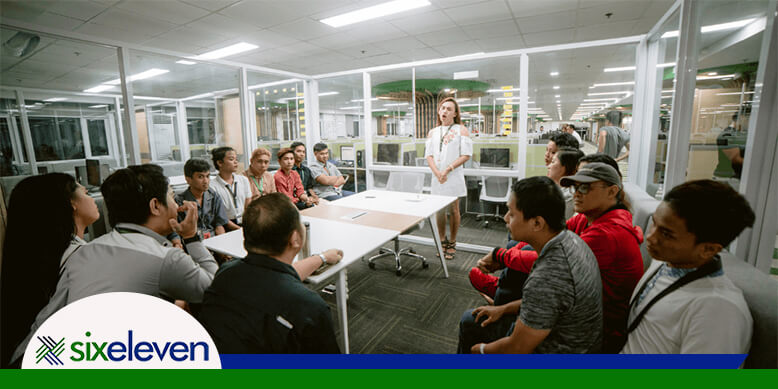Navigating Call Center Attendance Management: Challenges and Solutions
Call centers are the frontline interface between businesses and their customers in the fast-paced world of customer service; customer satisfaction and brand loyalty require effective communication, problem-solving, and individualized interactions.
Attendance management, on the other hand, is a vital factor that can substantially impact a call center’s success.
GET FREE QUOTE
Send us your requirements and we will get back shortly.
In this article, we will look at the concerns call centers face when managing attendance and look for inventive solutions to these problems.
Challenges in Call Center Attendance Management
1. Unplanned Absences
Call centers frequently deal with an enormous frequency of calls, and even an unanticipated absence of a single staff member can disrupt the entire operation; this results in longer call wait times, dissatisfied consumers, and poor service quality.
An unplanned absence occurs when an employee is absent for an unforeseeable reason, whether you’re dealing with a mild illness or a significant instance of mental illness, the result is the same: a hit to staff morale, along with some costly business disruption!
2. Employee Burnout and Attrition
Call center burnout occurs when personnel face persistent stress from imprecise expectations, a lack of work-life balance, and other unmanaged workplace variables; this is a big issue, but it is regrettably all too prevalent.
Employees may experience significant levels of stress and burnout resulting from the demanding nature of the contact center job; which results in frequent sick breaks, tardiness, and even attrition.
3. Shift Scheduling Complexity
Shift work scheduling is a method of arranging for employees to work in shifts as they work particular hours and days.
Businesses that frequently work around the clock adopt shift schedules. There are various types of work shifts, such as fixed shifts, split shifts, rotating shifts, weekend shifts, on-call shifts, and so on.
Call centers are often open 24 hours a day, seven days a week in providing continuous customer support, and it might be hard to create effective shift plans that balance personal preferences, workload, and operational requirements.
4. Manual Tracking and Data Errors
Using outmoded technology increases the danger of system crashes, security issues, and data loss.
Have you considered what would happen if your system does not process payroll correctly and an employee complains.
A modern attendance management system alleviates stress, saves time, and boosts accuracy.
Manual data entry in traditional attendance management systems can be error-prone and time-consuming; and accurately managing attendance, leaves, and time off can be a significant pain.
5. Lack of Real-time Visibility
Realtime Management assesses your communication channels and support agents daily, including tasks like monitoring customer interaction levels and comparing them to anticipated plans, monitoring agent attendance and time management about the scheduled schedule.
Supervisors frequently struggle to acquire real-time visibility over attendance and performance of their teams, and without timely insights, making educated decisions and effectively allocating resources becomes difficult.
Solutions to Enhance Call Center Attendance Management
1. Implement Workforce Management Software
Workforce management is a collection of call center processes ensuring the proper number of agents with the relevant abilities are scheduled at the right time; this is especially crucial post-pandemic, as more CX teams embrace long-term remote and distributed staffing methods.
WFM software automates scheduling, keeps track of attendance, and forecasts call volume; these solutions took past data and employee preferences into account when creating optimum schedules, decreasing the possibility of overstaffing or understaffing.
2. Flexible Work Arrangements
Flexibility in contact centers means different things to different people, it mainly entails making life easier for agents, allowing them to achieve the elusive work/life balance, it can also refer to the automated technology that allows for flexible working.
Another new connotation has lately arisen that focuses on the growing trend for businesses to boost their agility by adopting flexible or reduced-hours working contracts.
Flexible work arrangements, such as remote work, part-time choices, or flexible hours, can assist in preventing burnout and boost employee happiness; leading to higher attendance rates and general morale.
Get 2021 Outsourcing Guide
Find out how SixEleven can help you with outsourcing
3. Employee Engagement Initiatives
Include the contact center agents in the company’s overall operations. With regular meetings, solicit their feedback. Organize workshops and peer mentoring activities where they can discuss ideas. To answer their difficulties, do focus group studies.
Employee engagement activities are part of a larger plan to promote employee satisfaction by giving possibilities for growth, succession, and development. Mentoring, coaching, feedback, career development, and opportunities to co-create the company’s future are part of these programs.
Employee engagement programs, appreciation, and regular feedback can enhance employee motivation and reduce absenteeism.
4. Real-time Analytics and Reporting
What exactly is real-time analysis in a call center?
It captures and interprets data in real time using modern monitoring tools and analytics, providing supervisors with rapid insights into call volumes, agent performance, customer happiness, and emerging issues.
Supervisors can monitor attendance and call center metrics using real-time analytics dashboards; this aids in recognizing trends, responding to situations quickly, and making data-driven decisions; this allows you to assess agent performance. Then, during any engagement, you can provide feedback on their performance. If the agent has a firm grasp of the situation, you can reassure them that they are on the correct route.
5. Automated Communication Systems
The practice of enabling call center technology to automate repetitive processes and workflows without human interaction is known as call center automation.
It assists call center employees by automating time-consuming duties such as proactive outreach, post-call follow-ups, customer insights, omnichannel routing, employee scheduling, and others. Call center automation increases agent productivity and efficiency by eliminating busywork, enhancing customer satisfaction and other call center metrics such as first call resolution, speed of response, and more.
Implementing automatic communication systems can alert employees of changes in their schedules, shifts, and other changes, minimizing the likelihood of misunderstandings and last-minute scheduling difficulties.
6. Training and Skill Development
The new hires and existing employees require training to develop their abilities and stay engaged. While providing a fantastic call center experience that increases customer satisfaction is a tall order, it is doable by adhering to call center training best practices.
The process of preparing individuals to operate as customer service representatives in contact centers is known as call center agent training. Communication abilities, product or service training, call handling tactics, customer service best practices, and company policies and procedures are all part of it.
Continuous training and skill development can enhance employee confidence and competence, resulting in a more engaged and devoted staff.
7. Health and Wellness Programs
A wellness program is a holistic health-benefits project focusing on maintaining or improving well-being through healthy food, exercise, stress management, and sickness prevention.
It improves employee performance, raises staff morale, increases job satisfaction, prevents lost time due to illness, stress, or absenteeism, reduces turnover, and more. Overall, it is advantageous to both employees and companies.
Implementing health and wellness initiatives can improve employee well-being by lowering the chance of frequent sick leaves and increasing overall attendance rates.
Poor attendance is one of the most serious issues confronting call center operations today; traditional methods of attendance management may have worked in the past, but they are no longer accurate or adequate. Fortunately, call center attendance management does not have to be difficult today. That is why we have emphasized the most effective tactics and instruments for the job!
A successful call center business relies on effective attendance control. Call centers may improve their overall performance and provide outstanding customer experiences by tackling the difficulties of unscheduled absences, fatigue, complex scheduling, manual tracking, and lack of visibility. Embracing innovative solutions such as workforce management software, flexible work arrangements, and employee engagement initiatives can help call centers create a more productive, engaged, and satisfied workforce, resulting in higher attendance and better customer service outcomes.
#CallCenterAttendanceManagement
GET FREE QUOTE
Send us your requirements and we will get back shortly.
#SixElevenGlobalServices
#QualityExperienceTheFirstTimeEveryTime



